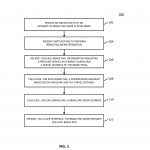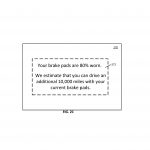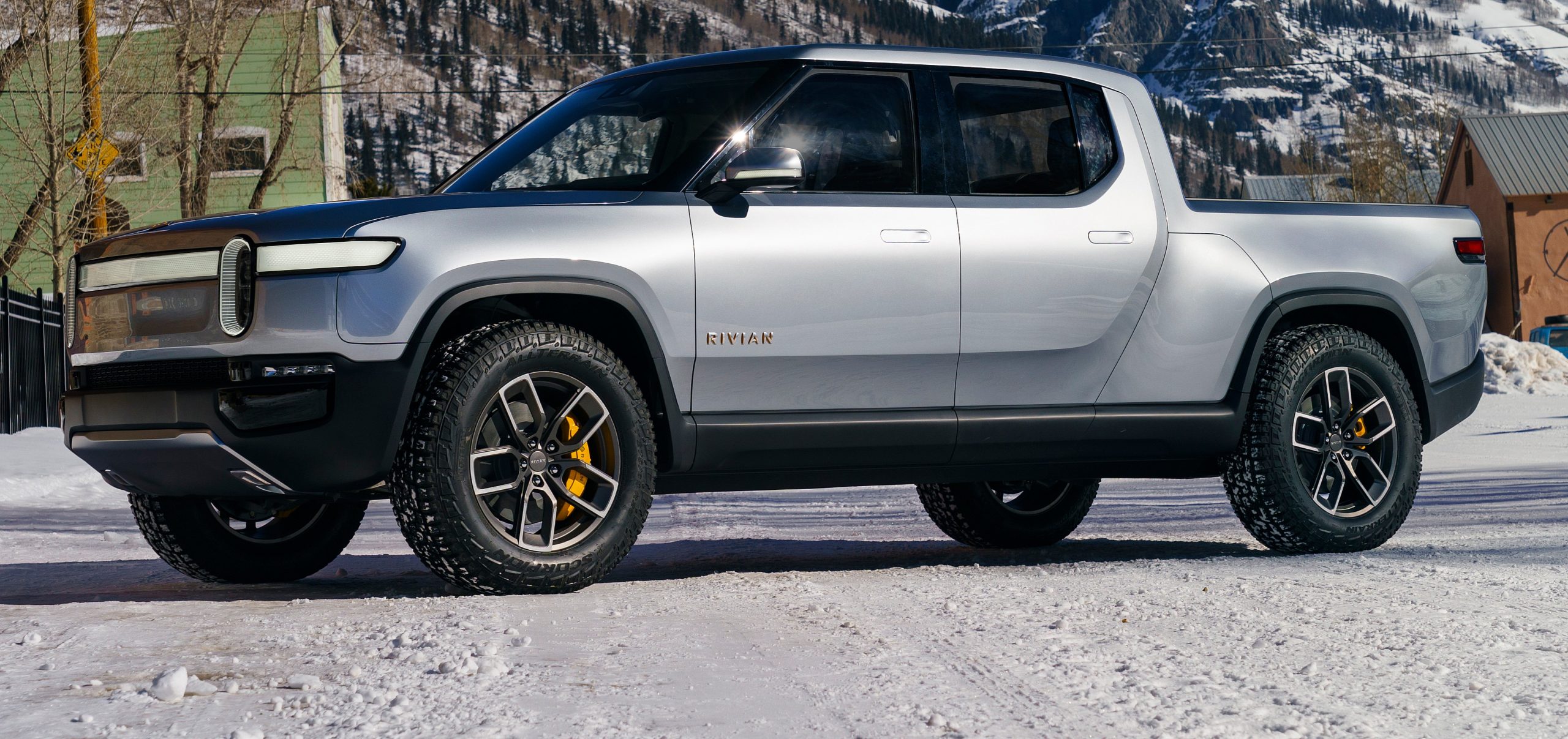
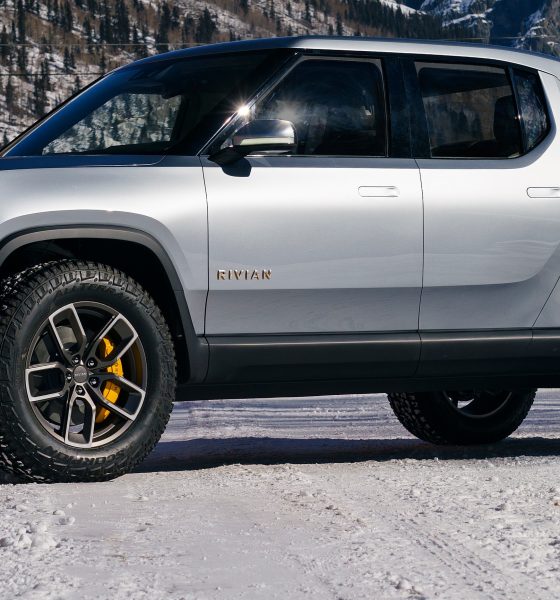
News
Rivian patent hints at real-time brake wear monitoring system using driver profiles
Rivian’s attention to detail on its all-electric vehicles is laudable, and a recent patent application by the outdoor adventure company for monitoring brake wear continues that theme. In an application titled “Methods, Systems, and Media for Non-Contact Brake Pad Wear Determination”, a method of estimating the wear on individual breaks via computer algorithms is described. Once calculated, the information is then made available to drivers for planning purposes via the infotainment screen on the R1T pickup truck and R1S SUV. The application published on August 1, 2019 under US Patent Publication No. 2019/0234475.
The background of Rivian’s application stated the following reasons why the invention is needed:
“Current approaches for determining brake pad wear…tend to merely indicate when brake pads are fully worn, for example, using a brake pad indicator that causes the brakes to squeal when the indicator contacts the brake disc or that causes an indication on a dashboard of the vehicle to be presented. It may be useful for a driver to know a current wear condition of the brake pads before the brake pads are fully worn, for example, to plan for vehicle maintenance. However, it can be difficult to determine a current wear of the brake pads.”
While not an official reason listed on the patent, one could also assume brake squealing as an annoying sound in itself would also merit the invention’s usefulness as a reliable preventative.
- Rivian brake-monitoring patent application. | Image: Rivian/USPTO
- Rivian brake-monitoring patent application. | Image: Rivian/USPTO
- Rivian brake-monitoring patent application. | Image: Rivian/USPTO
- Rivian brake-monitoring patent application. | Image: Rivian/USPTO
Overall, Rivian’s application calculates the amount of wear on its vehicles’ brakes by comparing data points gathered from two braking events. The amount of pressure applied plus the distance traveled at two different intervals is collected, then compared to a brake database, and an estimate of the mileage left before a change is needed is provided to the driver. The calculation can also include the driver’s braking history to more accurately reflect the mileage. In other words, if you’re a bit rough on the brake pedal, Rivian’s software will take that into account and probably shorten the mileage you have left before needing replacement parts compared to someone that drives…differently. Here’s the formal language for this ability:
“In some embodiments, the method further comprises associating a braking profile with an operator of the vehicle, wherein the indication of the wear amount of the brake pad includes a number of miles until the brake pad requires replacement that is estimated based on the associated braking profile.”
The method described in the claims of the application that calculate the wear on the brakes indicates a process initiated by the driver, i.e., the driver initiates a brake wear test on the center touchscreen and uses the brakes at two intervals as instructed by the vehicle’s computer to determine the wear percentage. However, the description of the application indicates that the brake testing can also happen in real-time during normal operation. The formal language for this reads as follows:
“…In some embodiments, [the testing] process…can receive a group of brake caliper measurements and corresponding brake pedal travel distances…during application of the brake pedal during normal operation of the vehicle…Additionally, in some such embodiments, [the testing] process can present indications of brake pad wear at any suitable time, such as a next time the vehicle is turned on, and/or at any other suitable time.”
This application is yet the latest nod towards Rivian’s development of a comfortable and luxury driving experience for its vehicle owners. The car maker’s branding as an outdoor electric adventure company really seems to have embraced its mission to get people outside exploring more by making the experience as convenient as possible. Whether it’s ample storage capacity, swapping out cargo modules, extending battery range with a digital jerry can, a portable kitchen built specifically for the R1T pickup truck, or now, being able to easily plan ahead for basic vehicle maintenance by checking a screen, Rivian is continuing its march against barriers to enjoying nature anywhere.
There’s a new phrase that seems to be developing based off of an old one about willpower: “Where there’s a Rivian, there’s a way.”

News
Xpeng CEO: Tesla FSD 14.2 has developed “near-Level 4” performance
While acknowledging that imperfections remain, the Xpeng CEO said FSD’s current iteration significantly surpasses last year’s capabilities.
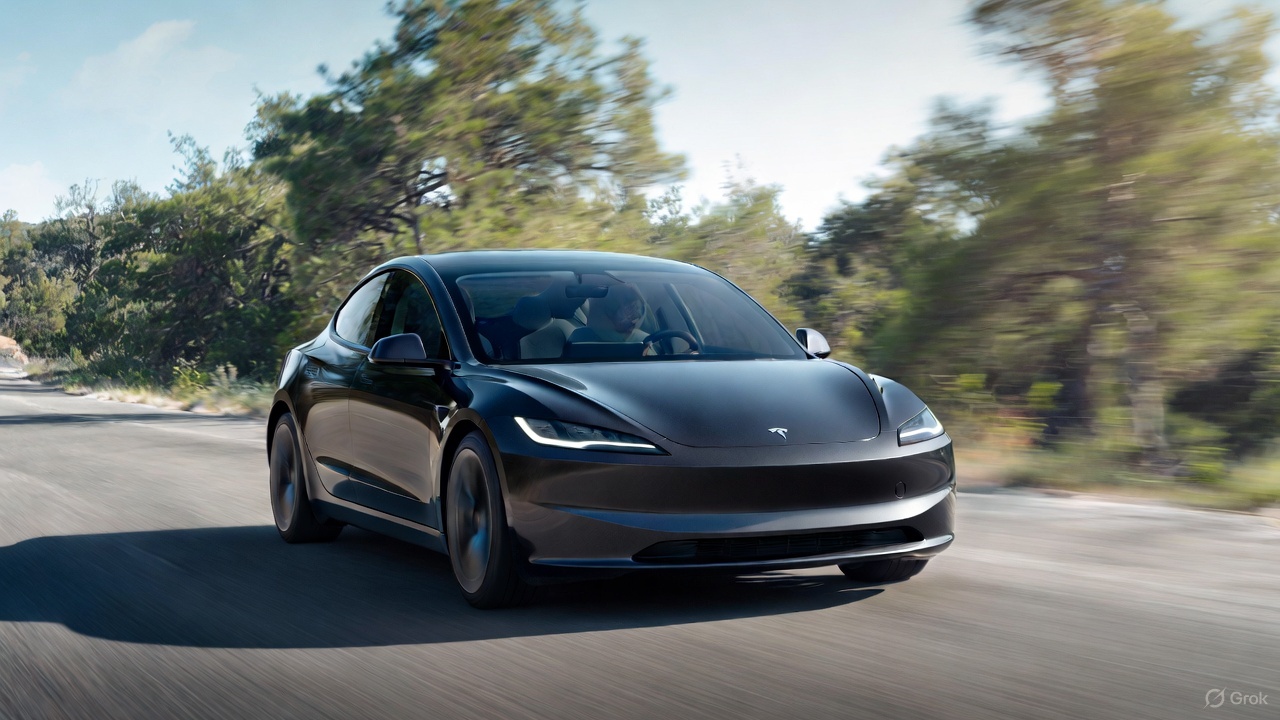
Xpeng CEO He Xiaopeng has offered fresh praise for Tesla’s Full Self-Driving (FSD) system after revisiting Silicon Valley more than a year after his first hands-on experience.
Following extended test drives of Tesla vehicles running the latest FSD software, He stated that the system has made major strides, reinforcing his view that Tesla’s approach to autonomy is indeed the proper path towards autonomy.
Tesla FSD closing in on Level 4 driving
During his visit, He test-drove a Tesla equipped with FSD V14.2. He also rode in a Tesla Robotaxi. Over roughly five hours of driving across Silicon Valley and San Francisco, He said both vehicles delivered consistent and reassuring performance, a notable improvement from his experience a year earlier.
According to He, Tesla’s FSD has evolved from a smooth Level 2 advanced driver assistance system into what he described as a “near-Level 4” experience in terms of capabilities. While acknowledging that imperfections remain, the Xpeng CEO said FSD’s current iteration significantly surpasses last year’s capabilities. He also reiterated his belief that Tesla’s strategy of using the same autonomous software and hardware architecture across private vehicles and robotaxis is the right long-term approach, allowing users to bypass intermediate autonomy stages and move closer to Level 4 functionality.
He previously tested Tesla’s FSD V12.3.6 and Waymo vehicles in California in mid-2024, noting at the time that Waymo performed better in dense urban environments like San Francisco, while Tesla excelled in Silicon Valley and on highways.
Xpeng’s ambitious autonomy roadmap and internal challenge
The Silicon Valley visit also served as a benchmark for Xpeng’s own autonomy ambitions. He stated that Xpeng is looking to improve its VLA autonomous driving system to match the performance of Tesla’s FSD V14.2 within China by August 30, 2026. Xpeng is poised to release its VLA 2.0 smart driving software next quarter, though He cautioned that the initial version will not be able to match FSD V14.2’s capabilities, as noted in a CNEV Post report.
He also added a personal twist to the goal, publicly challenging Xpeng’s autonomous driving team. If the performance target is met by the 2026 deadline, the CEO stated that he will approve the creation of a Chinese-style cafeteria for Xpeng’s Silicon Valley team. If not, Liu Xianming, head of Xpeng’s autonomous driving unit, has pledged to run naked across the Golden Gate Bridge, He noted.
News
Another Tesla Model 3 variant sold out for January 2026 in China
A look at Tesla China’s order page shows that new Model 3 LR RWD orders now have an estimated delivery date of February 2026.
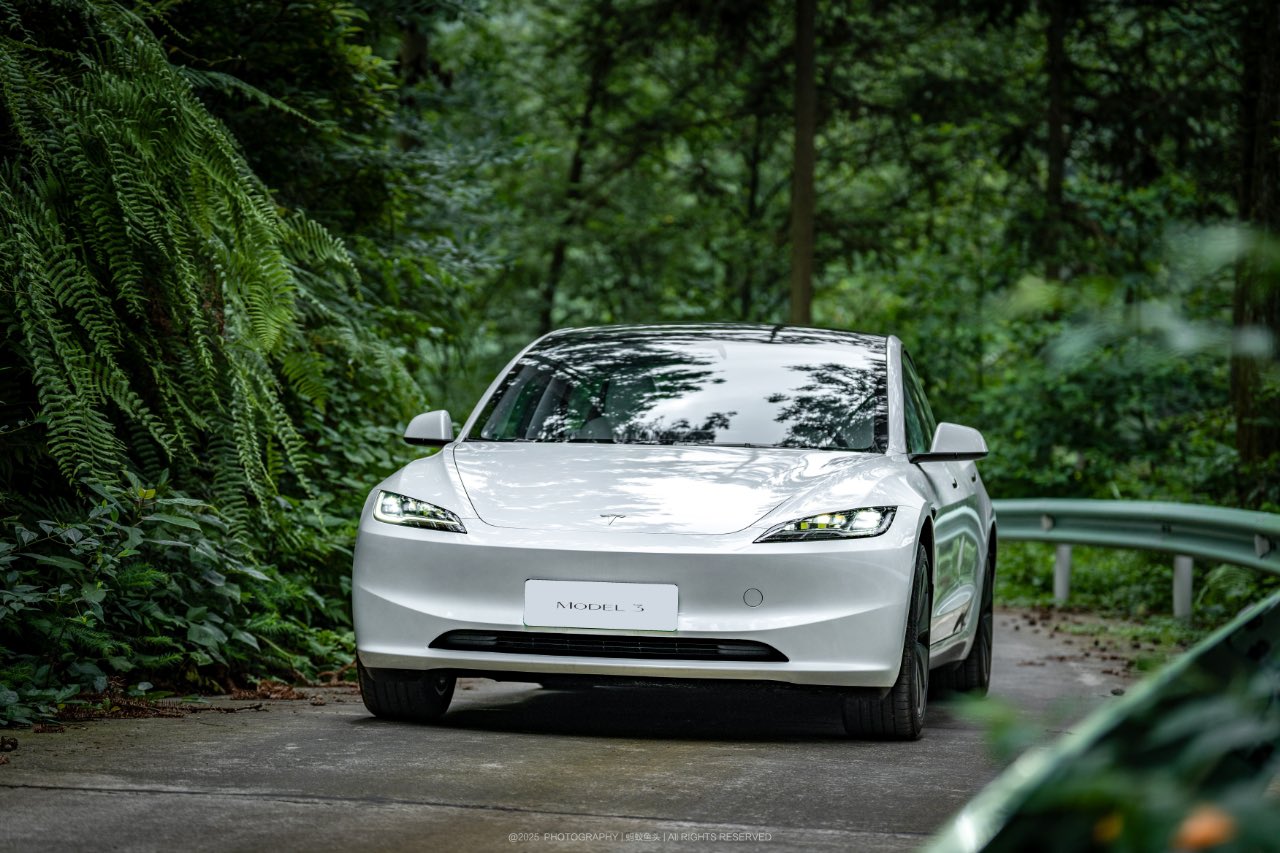
Another Tesla Model 3 variant in China appears to have sold out for January 2026, with the vehicle now showing an estimated delivery date of February 2026 for new orders. This bodes well for the all-electric sedan, which has maintained notable sales despite more affordable rivals like the Xiaomi SU7 and its crossover sibling, the Model Y.
Model 3 LR RWD joins February 2026 queue
A look at Tesla China’s order page for the all-electric sedan shows that new Model 3 Long Range Rear Wheel Drive orders now have an estimated delivery date of February 2026. Priced from RMB 259,500 ($36,810), the LR RWD sits as the second-lowest-priced trim in Tesla China’s four-variant Model 3 lineup. The move follows a similar delivery timeframe for the Model 3 Performance, which remains the most expensive option for the vehicle, as noted in a CNEV Post report.
The estimated delivery dates of the two remaining Model 3 variants remain unchanged for now. The base RWD version, starting at RMB 235,500, and the LR AWD variant, priced from RMB 285,500, both continue to list estimated delivery times of 4-6 weeks. Tesla China, for its part, has continued to list in-stock Model 3 vehicles and is actively encouraging buyers to select inventory units for delivery before the end of the year.
Model Y delays and policy shifts
Delivery timelines for the Model Y in China are also stretching into 2026. All customized Model Y variants now show February 2026 as their estimated delivery date, except for the entry-level version, which still lists January 2026. Tesla has been urging customers since November to prioritize purchasing inventory vehicles, a push aimed at maximizing year-end deliveries.
Timing matters for Chinese buyers due to upcoming changes in government incentives. China’s new energy vehicle purchase tax exemption will be scaled back in 2026, which means customers who take delivery next year could face higher tax costs compared to those who are able to receive vehicles before the end of the year.
As per data from the China Passenger Car Association, Tesla recorded retail sales of 73,145 vehicles in November, down 0.47% year over year. From January through November, Tesla’s retail sales in China totaled 531,855 units, a 7.37% year-over-year drop.
News
Wedbush’s Dan Ives sees ‘monster year’ ahead for Tesla amid AI push
In a post on X, the analyst stated that the electric vehicle maker could hit a $3 trillion market cap by the end of 2026 in a bullish scenario.

Wedbush analyst Dan Ives is doubling down on Tesla’s (NASDAQ:TSLA) long-term upside. In a post on X, the analyst stated that the electric vehicle maker could hit a $3 trillion market cap by the end of 2026 in a bullish scenario, thanks to the company’s efforts to develop and push its artificial intelligence programs.
An aggressive valuation upside
Ives, Wedbush’s global head of tech research, stated in his post that Tesla is entering a pivotal period as its autonomy and robotics ambitions move closer to commercialization. He expects Tesla’s market cap to reach $2 trillion in 2026, representing roughly 33% upside from current levels, with a bull case up to a $3 trillion market cap by year-end.
Overall, Ives noted that 2026 could become a “monster year” for TSLA. “Heading into 2026, this marks a monster year ahead for Tesla/Musk as the autonomous and robotics chapter begins. We believe Tesla hits a $2 trillion market cap in 2026 and in a bull case scenario $3 trillion by end of 2026… as the AI chapter takes hold at TSLA,” the analyst wrote.
Ives also reiterated his “Outperform” rating on TSLA stock, as well as his $600 per share price target.
Unsupervised Full-Self Driving tests
Fueling optimism is Tesla’s recent autonomous vehicle testing in Austin, Texas. Over the weekend, at least two Tesla Model Ys were spotted driving on public roads without a safety monitor or any other occupants. CEO Elon Musk later confirmed the footage of one of the vehicles on X, writing in a post that “testing is underway with no occupant in the car.”
It remains unclear whether the vehicle was supported by chase cars or remote monitoring, and Tesla has not disclosed how many vehicles are involved. That being said, Elon Musk stated a week ago that Tesla would be removing its Safety Monitors from its vehicles “within the next three weeks.” Based on the driverless vehicles’ sightings so far, it appears that Musk’s estimate may be right on the mark, at least for now.
